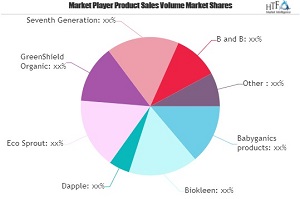Full-term, healthy babies should do well on a standard cow's-milk-based formula, according to DiMaggio and Porto. If you suspect your baby has a cow's milk protein allergy (identified by loose, mucous stools with blood), consult with your pediatrician about switching to a formula with a protein that has been hydrolyzed, or broken down into more digestible components. While the main source of carbohydrate in breast milk is lactose, the main source of carbohydrate in formula may be lactose, or something else like corn syrup or table sugar. Some parents may grow alarmed over the presence of corn syrup, but "some babies might not digest 100 percent lactose as well as a mixture of lactose and something else," said Dr. Bridget Young, Ph.D., an assistant professor of pediatrics and public health at the University of Rochester Medical Center. "If your baby is thriving, then your formula is working — don't switch," she continued, citing potential stress on the baby's digestive system, and the stress on the family thinking they need to find the perfect formula.
While compelling evidence on the benefits of additives like prebiotics and probiotics is lacking, one exception is milk fat globule membrane (MFGM), a protein present in breastmilk that contains several important biologically active factors. In early studies, MFGM. supplementation has shown to benefit brain development and the immune system, said Young. If additional research continues to show benefits, Porto believes nearly all formulas will soon contain it, just as they currently contain DHA and ARA, fatty acids which aid eye and brain development.
Follow directions for preparation and safe storage.Formula comes in three different preparations: ready-to-feed, powdered and concentrate. Powdered and concentrate formulations will require adding water in specific ratios. Not getting those ratios right could cause severe problems for your baby, such as vomiting, dehydration, or seizures. As long as your tap water source is safe (check with your pediatrician if you aren't sure), it can be used to mix with formula without boiling it first. "We don't recommend bottled water or 'baby' water, since it is expensive and unnecessary," wrote Porto and DiMaggio in their book. Also, if your water does not contain fluoride, your baby might need a supplemental source after six months, they wrote, and should be discussed with your pediatrician.
Once a bottle of formula has been prepared at room temperature, or has touched your baby's lips, it must be consumed within an hour or thrown away. This is true even if the formula has been mixed with breastmilk, which alone has a longer room temperature lifetime. A container of ready-to-feed formula, once opened, can be kept refrigerated for 48 hours; a bottle of formula prepared from powder can be kept refrigerated for 24 hours.
[How to feed a combination of breast milk and formula]
Use proper bottle-feeding technique and the right equipment.If your baby appears uncomfortable when feeding her formula, check your bottle-feeding technique before blaming it on the formula, said Clement. She recommended holding the baby upright during and after feeding, and letting her control the pace of feeding. "The baby might drink four ounces in 10 minutes, then need a break, and drink two more ounces 30 minutes later," said Clement. "Don't force the baby to drink it all at once, or assume the baby is done when she might be taking a break."
Wisner spoke about "paced bottle-feeding," a feeding technique meant to mimic breastfeeding (slower feeding with a wide bottle nipple that incorporates plenty of holding and bonding) that can be especially helpful to parents seeking to maintain the breastfeeding relationship.
Both Clement and Porto spoke about the importance of changing nipple sizes as your baby grows. "Sometimes it might be the equipment that's causing the problem," said Porto. Porto and DiMaggio recommended trial and error to determine what kind of bottle to use. Bottle parts should be sterilized before the first use, per the manufacturer's instructions, and washed in hot soapy water thereafter. Porto recommended purchasing a diaper bag with a cold insulated area and, when on the go, packing a formula container with divided sections, each containing enough pre-measured powdered formula for one bottle.

Tidak ada komentar:
Posting Komentar